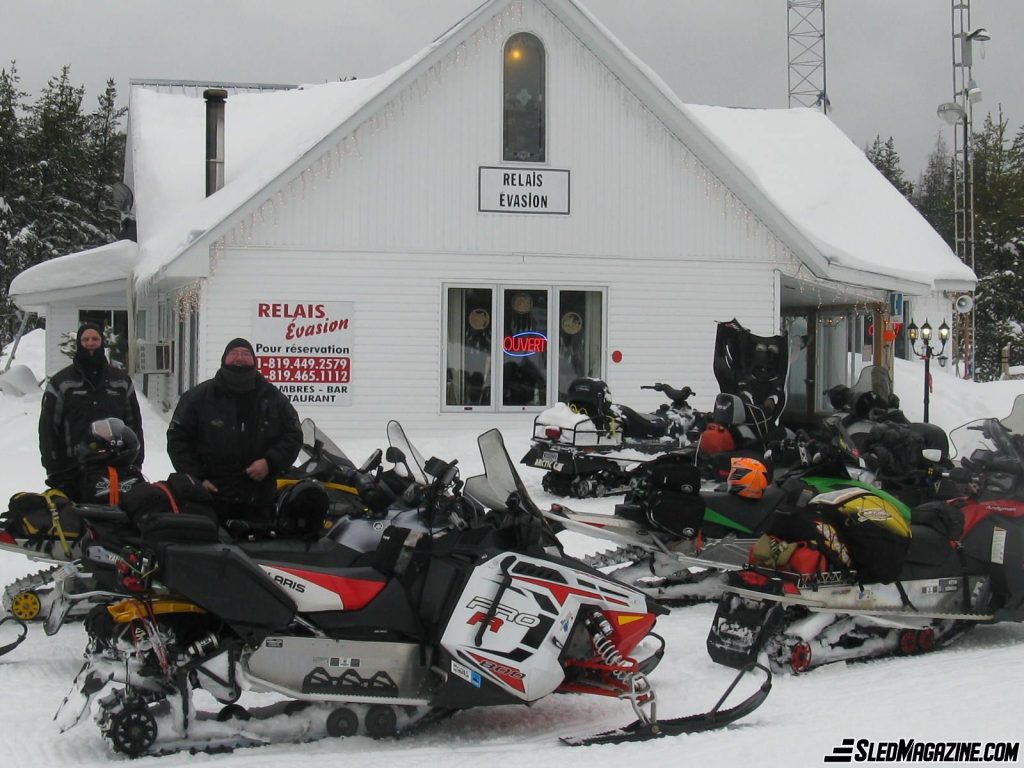Table of contents
ToggleMotoneige NB / Snowmobile NB maintains a network of approximately 150 trail shelters on New Brunswick’s approximately 8000 kilometres of trails. That is a trail shelter on average, for every 50 kilometres of trails in New Brunswick.
I have had the privilege of snowmobiling in 8 Provinces and 7 States over my 50-plus years of riding. Shelters are not part of trail systems everywhere.
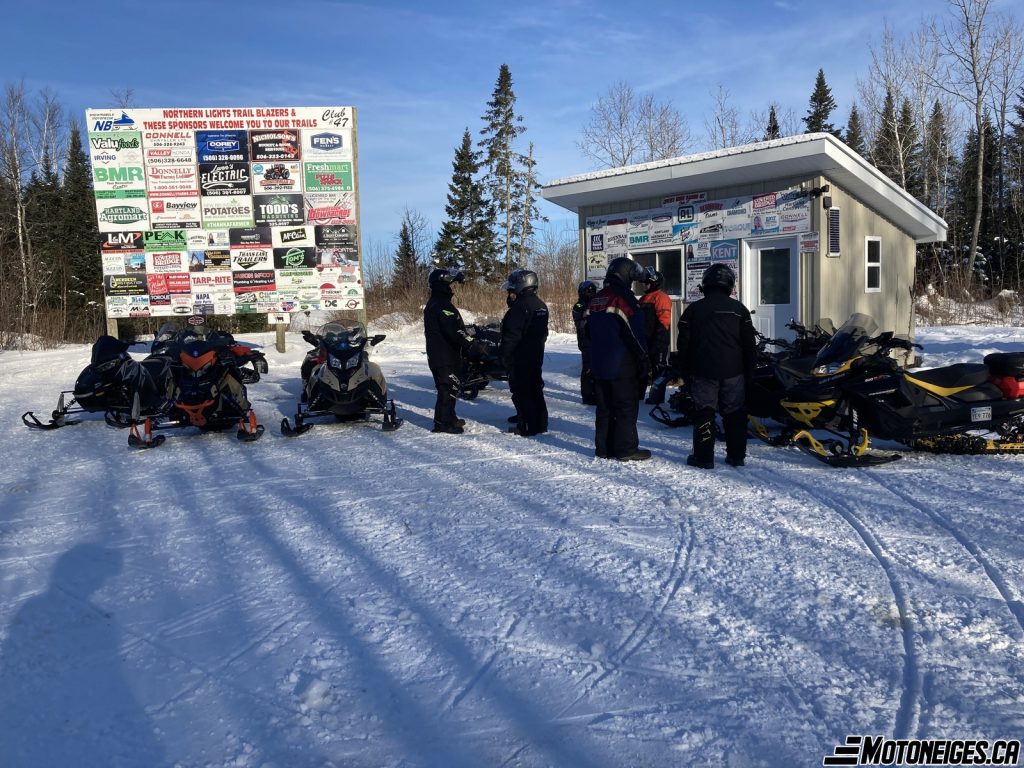
Shelters across Canada
British Columbia maintains cabins for larger groups, usually built at least two to three stories into the air to accommodate the massive snowfall accumulations at higher elevations. Alberta and Saskatchewan essentially have fewer shelters as a part of their trail systems. Manitoba (SnoMan) reported they have about 195 shelters, wow!
I have ridden in Ontario’s primarily northern regions. I was surprised to learn from my time in Ontario that shelters are not large n Ontario’s 30,000-plus km of trails.
In the balance of eastern Canada – Nova Scotia, PEI and Newfoundland and Labrador – there are trail shelters. Each Federation has varying shelters per region. The shelters are constructed and set up very similarly to New Brunswick’s. Most have benches or chairs, usually hooks for coats, shelves for helmets, a wood stove, firewood and often a drying rack for wet gloves or balaclavas. They all provide warm stops, there just are not nearly as many stops as in New Brunswick.
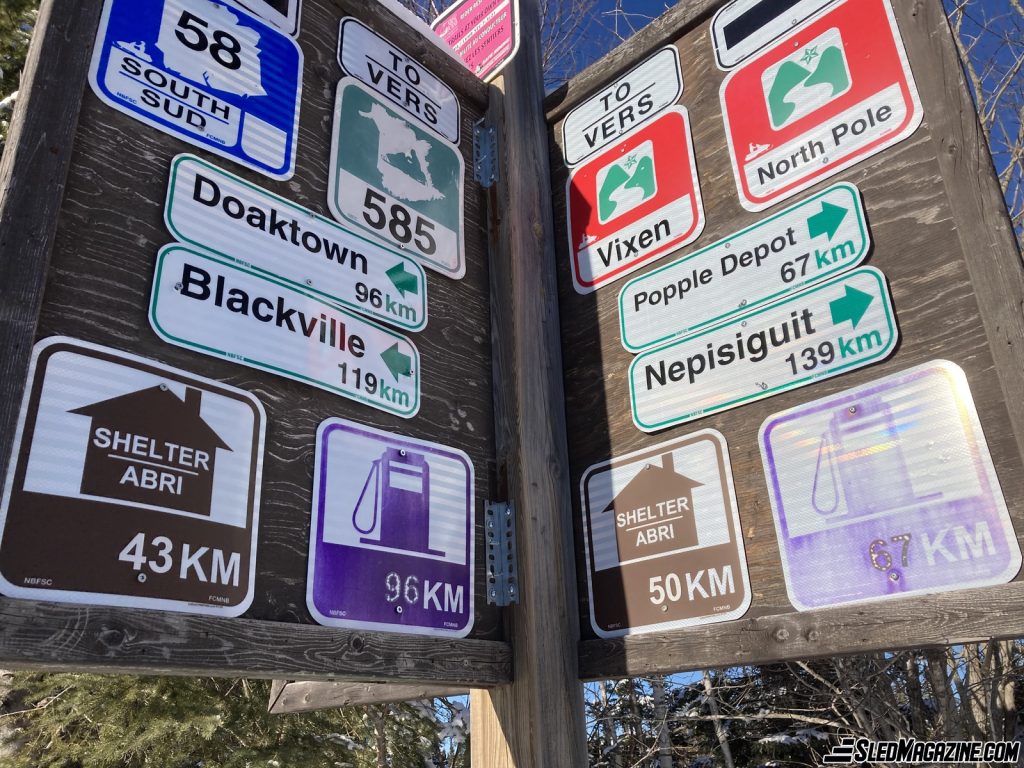
Quebec loves their Relais
In Quebec where I ride the most next to my home province the FCMQ’s clubs have embraced a uniquely different system for the purpose of shelter. Riders will find and visit a series of Relais throughout the Quebec region Some Relais are privately owned, some are part of a public system.
If you travel in Quebec in all seasons, you will soon learn that the Village-Relais is unique to Quebec travel. There are about 40 Village-Relais in the Province with many accessible by snowmobile.
Village-Relais are throughout Quebec in municipalities recognized by the Ministère des Transports. They offer various services in cooperation with local businesses and a pleasant and safe place to stop. These form many of the “shelters” when you snowmobile in Quebec and are supplemented by a series of private Relais offering fuel and usually a kitchen, but not accommodations.
Yes, there are a few ‘Club’ trail shelters in Quebec. Usually, these shelters are in very remote trail regions where getting stranded overnight could be fatal. These shelters are the exception in my experience over the 33,000 km network.
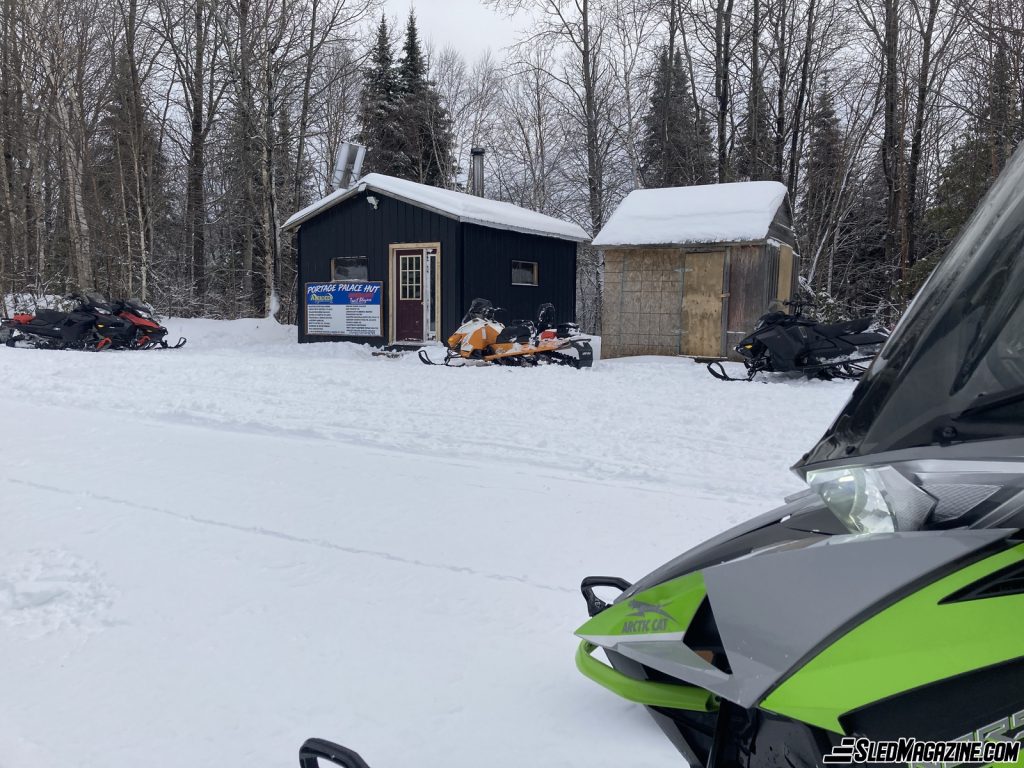
Clubs – Volunteers make shelters happen
Snowmobilers are fortunate to have Clubs. The club’s volunteers spend an enormous time, money and energy to provide us with shelter. To be able to stop and get warm, clean your visor, dry your balaclava and take a break from an extra cold day is a blessing. The volunteers who build and maintain these structures deserve a huge thank you. They deserve our appreciation more often than they actually receive it.
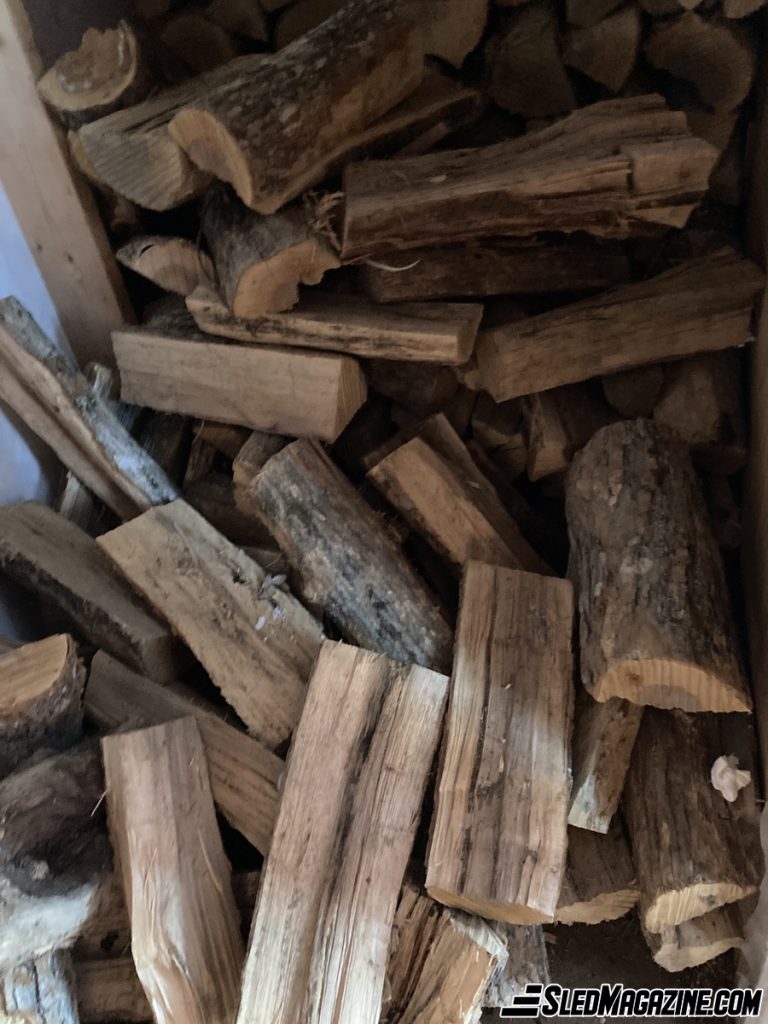
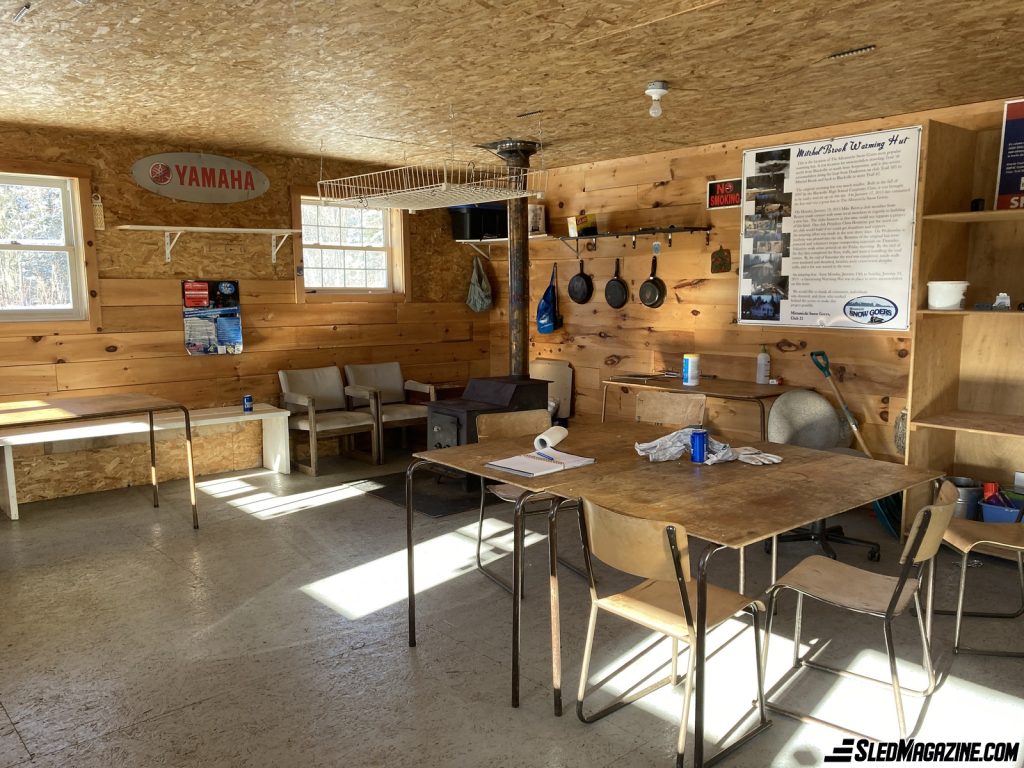
Accommodating and gracious Landowners
In N.B. we also have very accommodating landowners. Yes, some of the approximate 150 shelters are situated on Crown (public) Lands, but these locations have also been approved and monitored.
The majority of shelters are on someone’s private land. This fact is just one more reason we should be expressing our gratitude and humility. We do not own the ground we congregate on. And……almost every landowner asks that we ride only on the marked trail corridors to the shelter. The same private landowner also provided the trail you just rode to the shelter.
What is the snowmobiler’s role?
Very simple, if we want trail shelters to remain in our future, we must use them as they were intended. Stop, warm up, dry your gear, have your snack and move on. Make room for other riders.
Thank the local club and ask if they need a donation for the firewood for next season. Thank the landowner for staying on the trails that lead to and from the shelter. And leave all the shelters better than how you found them. I think there should be no need for any garbage cans, at any shelter, ever.
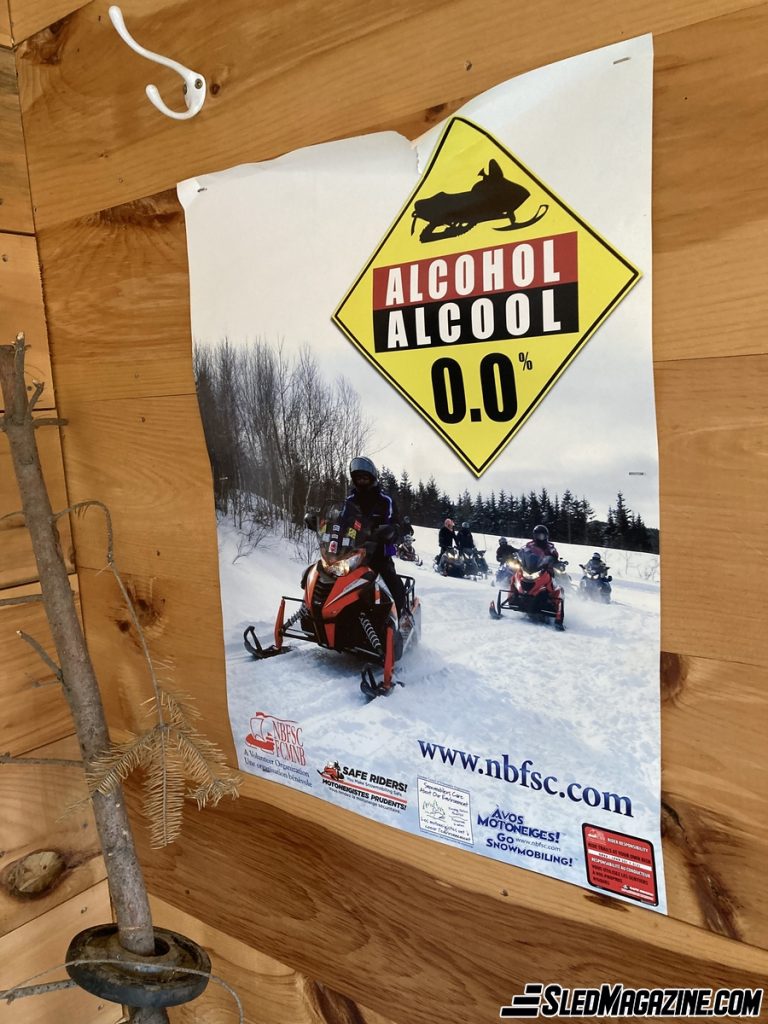
Conclusion
Trail shelters are not unique to New Brunswick, but adapt to the region they serve. Respective snowmobile communities have created or partnered with others to maintain a valuable system of relais or shelters to compliment our riding experience. Our role as riders is to respect everyone.
